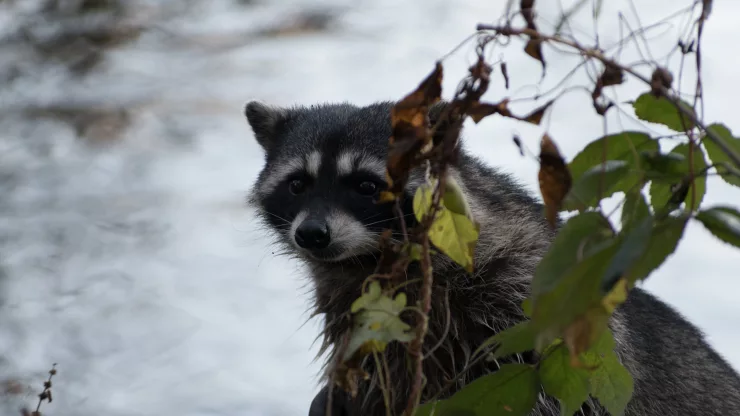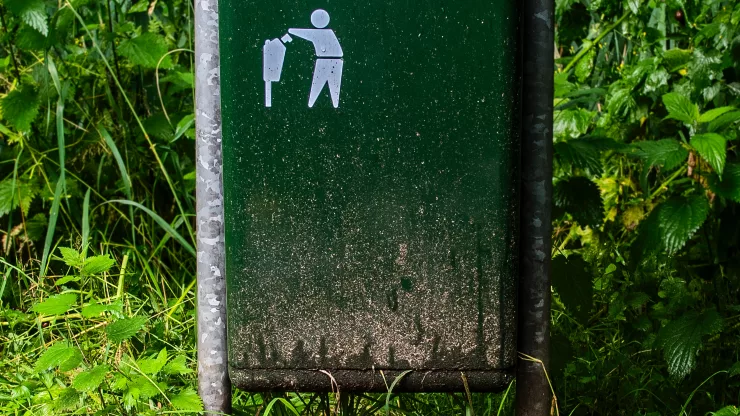The city is home to a diverse array of wildlife, and one animal that has learned to thrive in an urban environment is the raccoon.
These clever and adaptable creatures have found a way to survive and even prosper in the city, and a big part of their success is due to their diet.
In this article, we’ll take a closer look at what city raccoons eat, how they eat, and the impact of human behavior on their diet.
Jump to Section
Feasting with the City Raccoons: A Peek at Their Menu!
Introduction: Meet the City Raccoons
Raccoons are medium-sized mammals that are native to North America. They are known for their distinctive black and white facial markings and their bushy tails.
In the wild, raccoons typically live in forests and other wooded areas, but they have adapted to living in urban environments as well.
City raccoons can be found in parks, backyards, and even on city streets.
The City Raccoon Diet: What Do They Eat?
Raccoons are omnivores, which means they eat both plants and animals.
Their diet can vary depending on where they live and what food sources are available.
In the city, raccoons have access to a wide range of foods, both natural and human-made.
Natural Foods in the City: Fruits, Vegetables, and Nuts
City raccoons have learned to forage for food in parks and other green spaces.
They eat a variety of fruits, such as berries and apples, as well as vegetables like corn and carrots.
They also enjoy nuts, such as acorns and walnuts.
Human Foods: Garbage, Pet Foods, and More
One of the reasons raccoons thrive in the city is because they have learned to take advantage of human-made food sources.
They are notorious for raiding garbage cans and dumpsters in search of food.
They also eat pet food left outside and will even break into homes to get to it.
Surprising Finds: Insects, Small Animals, and Other Unusual Treats
Raccoons are opportunistic eaters and will eat just about anything they can find.
In the city, they have been known to eat insects, such as cockroaches and beetles, as well as small animals like mice and rats.
They have even been spotted eating pizza and other junk food left behind by humans.
City Raccoon Feeding Habits: When and How They Eat
Raccoons are nocturnal creatures, which means they are most active at night.
They spend their days sleeping in dens, which can be found in trees, under decks, or in other secluded spots.
Nocturnal Creatures: Eating at Night
Because they are most active at night, raccoons tend to do most of their feeding during the darkness.
They will come out of their dens and forage for food, taking advantage of the cover of darkness to avoid detection.
Social Feeders: Sharing Food with Friends and Family
Raccoons are social animals and often feed in groups. They will share food with each other and even care for each other’s young.
Creative Feeders: Adapting to Different Food Sources
Raccoons are creative feeders and have adapted to a wide range of food sources in the city.
They have even learned to open garbage cans and other containers to get to food.
The Impact of Human Behavior on City Raccoons and Their Diet
Human behavior can have a significant impact on city raccoons and their diet.
Positive and Negative Impacts of Feeding Raccoons
Feeding raccoons can have both positive and negative impacts. On the one hand, feeding them can help them survive in a difficult environment.
On the other hand, it can lead to overpopulation and the spread of disease.
Risks of Feeding Raccoons: Disease, Aggression, and More
Feeding raccoons can be risky for humans as well. Raccoons can carry diseases, such as rabies, and can become aggressive if they feel threatened.
Alternatives to Feeding: Appreciating Raccoons from a Safe Distance
Instead of feeding raccoons, it’s better to appreciate them from a safe distance.
You can observe them in parks and other green spaces, or even set up a wildlife camera to capture their activities.
Understanding and Respecting the City Raccoon Diet
In conclusion, city raccoons have adapted to living in an urban environment by taking advantage of a wide range of food sources.
They are creative and adaptable feeders who have learned to survive in a challenging environment.
By understanding and respecting their diet, we can coexist with these fascinating creatures and appreciate the diversity of wildlife in our cities.
FAQ
What should I do if I see a raccoon in my backyard?
If you see a raccoon in your backyard, it’s best to leave it alone. Raccoons are generally not aggressive unless they feel threatened.
However, if you have pets or small children, you should keep them indoors until the raccoon leaves.
Can I feed raccoons in the city?
Feeding raccoons in the city is not recommended. It can lead to overpopulation, the spread of disease, and aggressive behavior.
It’s better to appreciate raccoons from a safe distance and let them forage for food on their own.
What should I do if I find a baby raccoon?
If you find a baby raccoon, it’s best to leave it alone. The mother is likely nearby and will come back for it.
If you are concerned, you can contact a local wildlife rehabilitation center for advice.
I’m a nature enthusiast and creator of Metro Wilds and have spent years exploring the great outdoors.
With a passion for environmental conservation and sustainability, I have dedicated my career to writing about the beauty and wonders of nature, as well as the threats facing our planet.
Contact me at [email protected] for assistance.





